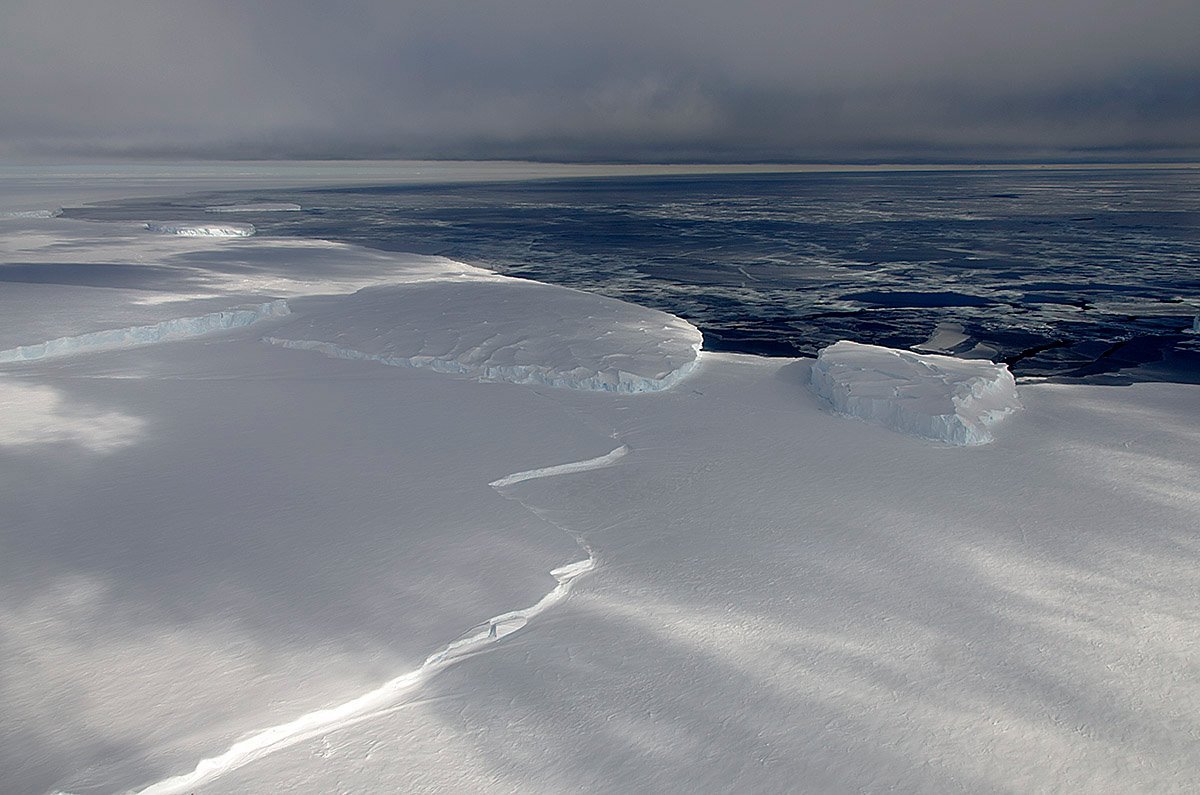The Ross Ice Shelf in Antarctica is the largest ice shelf in the world, but an international team of scientists recently discovered that it might not be for much longer. Part of the shelf, approximately the size of France, is melting 10 times faster than usual, according to the University of Cambridge.
While scientists have been been wary of the effects of warm deep ocean water on ice shelves, the study highlighted the effects of surface ocean water, heated by the sun, on these natural structures.
Take Action: Ensure All Communities Can Withstand Climate Disaster
"The stability of ice shelves is generally thought to be related to their exposure to warm deep ocean water, but we've found that solar heated surface water also plays a crucial role in melting ice shelves," study co-author Craig Stewart from New Zealand's National Institute of Water and Atmospheric Research (NIWA) said.
 NASA's Operation IceBridge photographs the landscape after a successful survey of sea ice in the Ross Sea.
NASA's Operation IceBridge photographs the landscape after a successful survey of sea ice in the Ross Sea.
NASA's Operation IceBridge photographs the landscape after a successful survey of sea ice in the Ross Sea.
Ice shelves — formed by glaciers and ice sheets floating on the ocean’s surface, while still attached to land — are important for the surrounding environment as they can keep glaciers in place and slow the melting process. These glaciers “feed” the ice shelves, acting as building blocks that link together to create and add to the large mass.
"Previous studies have shown that when ice shelves collapse, the feeding glaciers can speed up by a factor or two or three," co-author Dr. Poul Christoffersen from Cambridge's Scott Polar Research Institute said.
Though the impact of warming surface water on ice shelves is a new discovery for scientists, the thawing of the world’s glaciers due to global warming has been a growing concern for much of the 21st century.
Read More: Greenland Is Melting Twice as Fast as It Was 10 Years Ago
The emission of greenhouse gases, like carbon dioxide, nitrous oxide, and methane — caused by human activity — has largely contributed to the rise in the Earth’s surface temperature. The glaciers of the Garhwal Himalaya and Mount Kilimanjaro are just two of the areas most affected by climate change, with over 80% of the latter having liquified since 1912.
And while the Ross Ice Shelf continues to hold firm compared to others in Antarctica, the recent study does bring forth deeper concerns over rising sea levels. While smaller ice shelves are melting 100-200 times faster than larger ones, the bigger issue is the fact that the disintegration of larger ice shelves could cause sea levels to rise “several metres or more” in the future, according to the British Antarctic Survey.